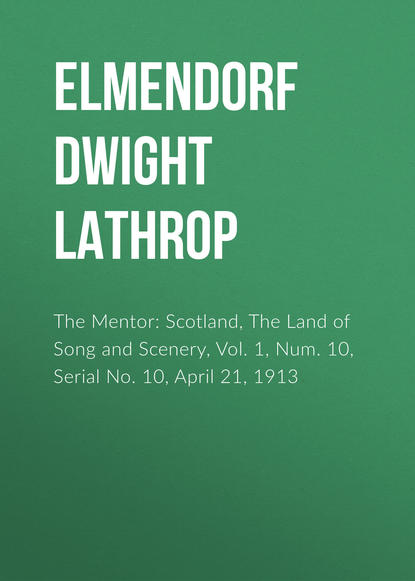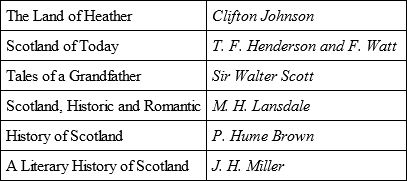 Полная версия
Полная версияThe Mentor: Scotland, The Land of Song and Scenery, Vol. 1, Num. 10, Serial No. 10, April 21, 1913
The modern Scottish home of British royalty is Balmoral, situated on an estate of ten thousand acres about fifty miles from Aberdeen. This beautiful palace was purchased by the Crown in 1852 from the Earl of Fife for one hundred and fifty thousand dollars. It was for years the favorite country home of Queen Victoria, and is now said to be the most cherished residence of British royalty.
THE SCOTTISH ISLES
Months could be profitably spent in touring through the Isles of Scotland, and they would be months of unalloyed delight. Two small islands should be visited even in the course of the briefest Scottish tour, the Island of Iona, where Saint Columba, the missionary, landed from Ireland in 563, to begin his missionary work in Scotland, and on which are to be found the tombs of ancient Scottish, Irish, and Norwegian kings.
For over a thousand years the Island of Iona was the chosen “God’s Acre” for the great chieftains. The land was held sacred on account of Columba, and it was regarded as the securest spot on earth for mortal remains to rest in. Therefore the bodies of kings were taken there even from distant points in Ireland and in Norway, and for centuries Iona was the Mecca of religious pilgrims who went there to pray and to pay reverent tribute to the tombs of the great.
FINGALS CAVE
Historic interest will draw you to Iona; the interest of wild nature will attract you to Staffa. On the Isle of Staffa is Fingals Cave, one of Nature’s curiosities, extraordinary in its formation and offering features of a wonder-compelling kind. The island is a rounded tableland which has been thrust up through the sea by volcanic action. It is about two miles in circumference, and rises nearly 150 feet above the surface of the ocean. The cave, which is crowned by a high arch of land, rises sixty feet above the sea, and through its interior length it varies from twenty to forty feet in width. Staffa has many caves; but the extraordinary size and character of Fingals Cave centers the interest of all visitors there. It is impossible in rough weather to enter the cave by boat. The method of visiting is to land some distance away and enter by a protected footpath. Once inside, the effect of surging, roaring waves overarched by echoing walls of basalt is most impressive. The basaltic columns – similar in formation to those of the Giants Causeway, across the sea on the coast of Ireland – rear themselves in parallel lines like a formidable palisade constructed for the support and protection of the cave.
We have visited but a few of the many places renowned for beauty and romance in the land of the heather. We have not seen Ben Nevis and the ruins of Inverlochy Castle; nor Swan Island in Loch Lomond; nor yet Lochleven Castle with its thrilling tradition of Queen Mary’s escape.
“No warden’s fire shall e’er againIllume Lochleven’s bosom fair;No clarion shrill of armed menThe breeze across the lake shall bear;But while remains a stone of thine,It shall be linked to royal fame, —For here the Rose of Stuart’s lineHath left the fragrance of her name.”And while we have pointed out the unique attractions of the Scottish Isles, we have said nothing of the wild, romantic beauty of the Highlands. The picturesque old ruin of Linlithgow Castle, Bothwell Castle, Loch Ness, the noble Northern peaks and their surroundings – all have been celebrated in glowing prose and verse, and around them clusters history and romance enough to make many volumes.
It is not easy to sum up the beauties of Scotland within the space of a few pages. It is a land where Nature and Romance go hand in hand, Nature affording a background of rare beauty, while Romance invests it with vital human interest. Picture an ideal tour in which each day is filled with profit and pleasure, and all Nature’s resources in land, sea, and sky combine to delight you and draw you on – then call that tour a “Summer in Scotland.”
SUPPLEMENTARY READING




